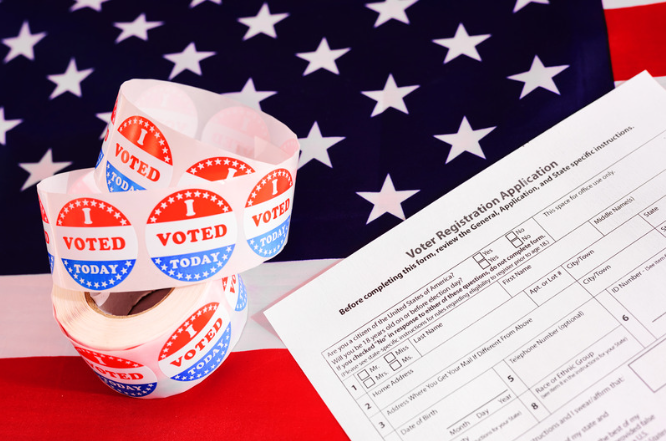Know when to intervene...

While the responsibility for domestic and sexual violence lies with the perpetrators of these crimes, we all play a role in creating a culture of respect and preventing violence.
Some bystanders may witness an actual incident of abuse or sexual violence that’s already occurring—like someone at a bar who sees a drunk person being taken advantage of, or someone who hears screaming coming from a neighbor’s home. In this case, being an engaged bystander may mean intervening in violence that’s already occurring.
But speaking up and interrupting an abusive situation that’s already occurring is only a tiny part of bystander intervention.
How You Can Be An Engaged Bystander
Here are some “bystander scenarios” with tips to help you take an active role in safely preventing and interrupting situations that may lead to sexual assault and domestic violence.
Leading up to every incident of abuse or sexual assault are all kinds of behaviors, words, and actions that normalize and condone violence in a community. Even actions like a sexist joke or victim-blaming remark contribute to a culture in which domestic and sexual violence is tolerated and not treated with the gravity and urgency that these crimes deserve.
The good news is that if we all view ourselves as engaged bystanders and learn strategies for speaking up to challenge the social norms that contribute to the culture of violence, all of us can play an active role in ending domestic and sexual violence.
Knowing When To Respond
Recognizing the signs of the behaviors that may signal domestic or sexual violence or circumstances that may lead to these crimes is a critical first step to taking action to prevent violence. Once you identify when to respond, you can then identify how to respond in a way that feels appropriate and comfortable.
TIP→ Follow your instincts. If a situation feels wrong to you, it probably is. One way to decide is to ask yourself, “If I don’t act, could the situation get worse?” IF YES, then you should evaluate the best way to intervene.
Knowing How to Respond to Domestic Violence While it is Occurring
Ask yourself if it's safe to intervene. Safety is key in deciding when and how to respond to domestic and sexual violence while it’s occurring. If the situation is already violent or looks like it’s escalating quickly, don’t directly intervene. Call 911(or your national police service).
If you’ve decided that you can safely intervene, you can create a distraction in an indirect and non-confrontational way. You can disrupt the situation by talking, like striking up a conversation about anything to help keep a potentially dangerous situation from escalating. Your goal is to prevent a situation from getting worse, or better yet, buy enough time to check in with the potential victim and ask them if they are okay.
TIP→ Ask for directions, the time, help looking for a lost item, or anything else that you think might keep them from leaving quickly. Better yet, if you can use a distraction that will get you a moment alone with the victim, you may have a moment to check with him/her and see if he/she wants any help. “Hey, I think your car is getting towed outside. I will stay here with your friend while you check it out.” “Hey, do you mind if I steal my friend for a second? It’s an emergency.”
Direct: If you don’t have a lot of time, you can still speak out and say what’s happening isn’t right and reassure the mistreated person they don’t deserve these actions. If you feel comfortable approaching the victim, you could check in and simply say, “I’m concerned about what just happened. Is anything wrong?” You can also let them know that FREE and CONFIDENTIAL help is available for victims, their children & pets.
Delegate: If you don’t feel comfortable directly talking with someone or distracting them, look for someone else who might be able to help you intervene –strength in numbers can be one of the most valuable tools, or you can look for someone else who might be in a better position to get involved – i.e. tell the bouncer, find the person’s friends, or call the authorities.
Knowing How to Respond to Potential Sexual Assault While it is Occurring
Prevention is Key. Before going out, create an exit strategy for uncomfortable situations—whether it’s checking in via text messages, creating a signal for a friend to swoop in if a conversation gets intense, or formulating an exit plan when the party’s over. Chat about different scenarios and how you want to respond.
Identify why you're worried. If you see something that makes you uneasy, identify the behavior that worries you. Is your friend drinking too much, and are you afraid she/he might not be able to say no? Are you afraid that they could potentially fail to recognize that the other party is too drunk to consent? Remember, if the person seeking sex is intoxicated, they have a decreased ability to recognize the capacity of the other party to give consent — the inability to perceive capacity does not excuse the behavior of the person who begins the sexual interaction or tries to take it to another level. Failure to recognize that the victim was too drunk to consent is not just “drunk sex.” It’s sexual assault.
Consider whether to intervene. A situation doesn’t have to be escalating for you to step in. Of course, if you see someone getting hurt or worried someone might be violent, don’t handle it solo. Call 911. However, we should also recognize that “shades of gray” or situations are hard to read—like at a party or a bar where something might be concerning but is not yet crossing the line. When something doesn’t feel right, ask yourself: ‘How might the situation affect the people who are involved? What’s the possible outcome? Could the situation get worse if you don’t do anything?” IF YES, then evaluate the best way to respond.
TIP→ Think of the “event” as being on a continuum that ranges from healthy, age-appropriate, respectful, and safe behaviors to sexual abuse, rape, and violent behaviors. Between the ends are other behaviors, including those that begin to feel inappropriate, coercive, and harassing. These mid-range behaviors present an opportunity to intervene and reinforce positive behaviors BEFORE a behavior moves further along the continuum into something violent. – via NSVRC’s Engaging Bystanders in Sexual Violence Prevention Boolket by Joan Tabachnick.
Decide on a course of action. There are many ways you can step in when something isn’t right. Stepping in can make all the difference, but remember never to put your own safety at risk.
Other methods of stepping in could be:
→ DISTRACT: You can disrupt the situation just by talking, like striking up a conversation about anything. Your goal is to prevent a situation from getting worse, or better yet, buy enough time to check in with the potential victim and ask them if they are okay.
→ DIRECT: Ask directly if they are okay or need help or someone to stay with them. You can ask if they’re ready to leave or if they’d like to grab a bite with you to help remove them from an uncomfortable situation.
→DELEGATE This is key: Enlisting allies, like another mutual friend, can defuse the situation much more smoothly than trying to go it alone. You can also look for someone else who might be in a better position to get involved – i.e. tell the bouncer, find an RA, look for the person’s friends, or call the authorities.
There's no "one-size-fits-all" response.
Intervening can be tough if you feel like your actions have to be a major act of heroism, like fending off an attacker. But there’s more than one way to help, whether it’s as subtle as talking with a friend about concerning behavior or planning ahead to leave a party safely. All of these conversations set a tone: Your friends will know that you’re a safe person to confide in and that there are clear boundaries worth respecting.
Together We Can End Domestic and Sexual Violence






